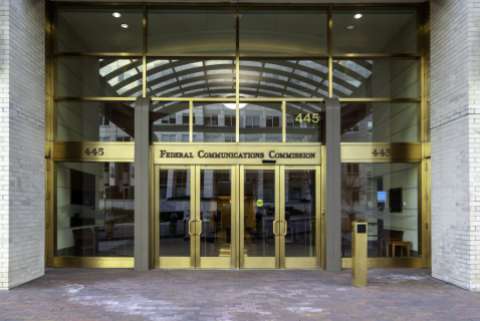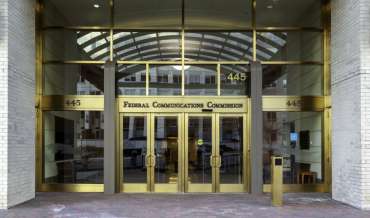Table of Contents
- Overview
- Regulatory Enforcement Techniques
- Good News and Bad News
- Upstream and Downstream
- Conclusion
Overview
On August 2, the attorneys general from all 50 states announced the creation of an Anti-Robocall Litigation Task Force. The purpose of this task force is "to investigate and take legal action against the telecommunications companies responsible for bringing a majority of foreign robocalls into the United States." This represents an escalation in the ongoing trend of state and federal regulators—often working together—directly enforcing telemarketing regulations rather than merely leaving things to private plaintiffs in lawsuits and class actions. These regulatory enforcement efforts present particular challenges for law-abiding callers.
Regulatory Enforcement Techniques
Regulatory enforcement of telemarketing laws and rules, both at the federal and state level, can take numerous forms. Regulators can levy fines directly against actors they deem to have violated the law—although at the federal level, the Federal Communications Commission (FCC) and Federal Trade Commission (FTC) often need assistance from the Department of Justice (DOJ) to actually enforce those fines. Regulatory agencies and state attorneys general can also file lawsuits under many telemarketing laws. And regulators can send cease and desist letters, promising further action if the recipients of the letters do not abide by the regulators’ instructions.
Good News and Bad News
From the perspective of legitimate, well-intentioned, law-abiding callers, regulatory enforcement does have some preferable features compared to litigation. Government regulators do not have the same financial incentive that entices so many professional Telephone Consumer Protection Act (TCPA) plaintiffs and serial litigators. In theory, this means that the regulators are more likely to focus on callers that are genuinely perpetuating criminal scams rather than trying to get as much money as possible from legitimate callers through litigation and demand letters alleging mere technical violations of complex, vague telemarketing laws.
Unfortunately, other priorities for regulators serve as a countervailing source of risk for callers. Namely, regulators are politicians and have political incentives to target the telemarketing industry. In an era of extreme partisanship, one of the few remaining bipartisan political positions is a broad demonization of the telemarketing industry. This is often true even for ostensibly pro-business, conservative politicians. During oral arguments for Barr v. American Association of Political Consultants, two conservative justices, Brett Kavanaugh and Chief Justice John Roberts, both praised the TCPA, calling it “one of the more popular laws on the books because people don’t like cell phone robocalls,” and saying, “Nobody wants to get robocalls on their cell phone.” The political incentives to appeal to one of the last remaining bastions of bipartisan agreement could potentially lead regulators to take a heavier hand in particular enforcement actions than would be justified by the facts of the case.
Upstream and Downstream
In theory, state and federal regulators should have the incentives to only focus on true scammers and the expertise to know the difference between criminals using telemarketing techniques to perpetuate their scams and legitimate marketers who may or may not be fully compliant with arcane and confusing regulations. Of course, because the law is not a set of abstract principles to applied by impartial actors but rather a powerful tool wielded by potentially flawed humans, these distinctions are not always maintained.
However, government enforcement generally tends to focus more on true bad actors rather than indiscriminate, opportunistic targeting of any callers that may have significant financial exposure. But even within this dynamic, there are indirect consequences for legitimate callers when the regulators target the bad actors. Call deliverability becomes a more acute problem in an environment where regulators target the telecom carriers that process illegal robocalls.
In July, the FCC authorized carriers to block calls in relation to efforts to prevent an auto warranty robocall scam. The FCC and the Ohio Attorney General also took additional enforcement actions as a part of those regulatory efforts, including sending cease and desist letters to VoIP providers associated with the calls. The FCC has even considered implementing a system in which providers that allow illegal robocalls are automatically de-listed. The downstream effects of these restrictions could affect the call deliverability of legitimate callers that may use these networks. And these sorts of actions precipitate a general shift in the priorities of telecom carriers.
Previously, telecom carriers made it a priority to connect every call, if possible. But those priorities are changing thanks to technology such as STIR/SHAKEN, laws such as the TRACED Act, and regulatory actions like those discussed in this article. Now carriers have a mandate to prevent illegal traffic, even if that results in some legitimate traffic being prevented. Indeed, the TRACED Act includes a safe harbor defense for carriers that inadvertently block legitimate calls as a part of efforts to prevent illegal calls. For the vast majority of callers who are not engaging in scams, this necessitates efforts to ensure that their calls are not blocked or incorrectly labeled as spam.
Conclusion
The world of compliance is not thermostatic. An increase in the risks associated with regulators does not decrease the risks associated with litigators. Compliance is a “both/and” proposition rather than an “either/or”. For example, the Michigan legislature is considering an overhaul to the state’s telemarketing regulations that includes both a private right of action with penalties of up to $1,000-per-violation and regulatory enforcement with penalties of up to $25,000-per-violation. Along with the aforementioned ways these sorts of regulatory actions affect call deliverability, callers need to be prepared for managing multiple, changing aspects of compliance.





